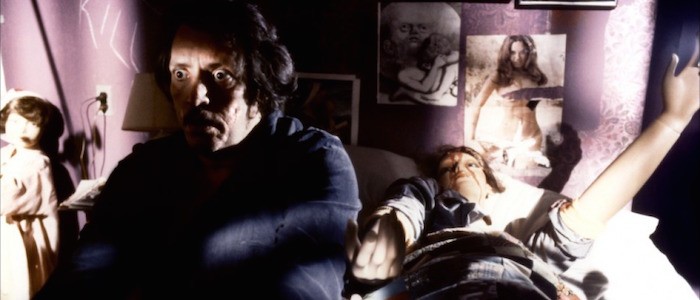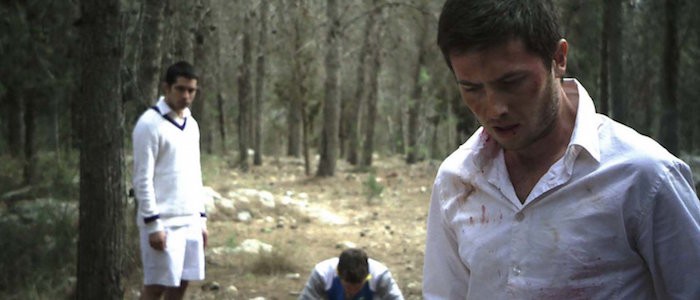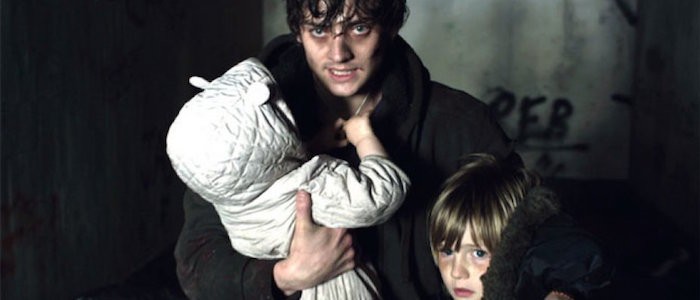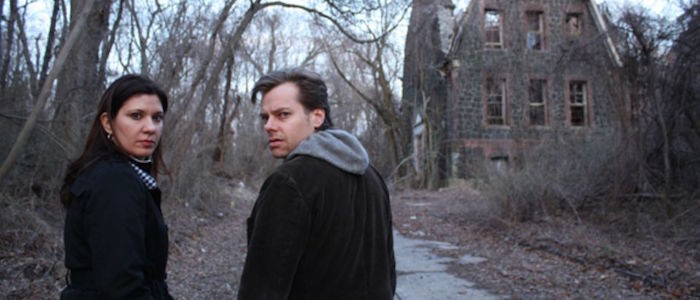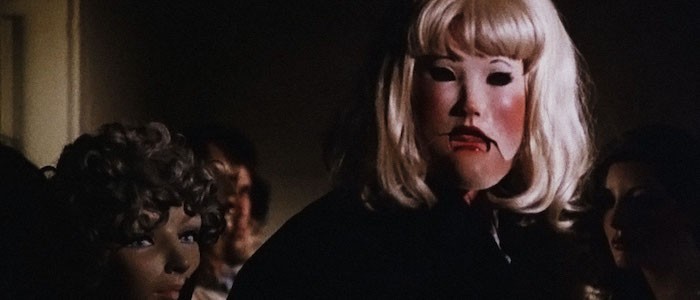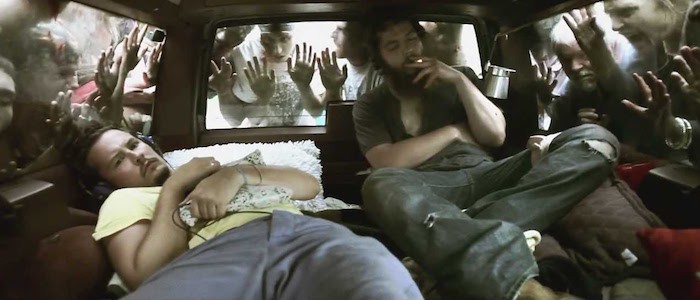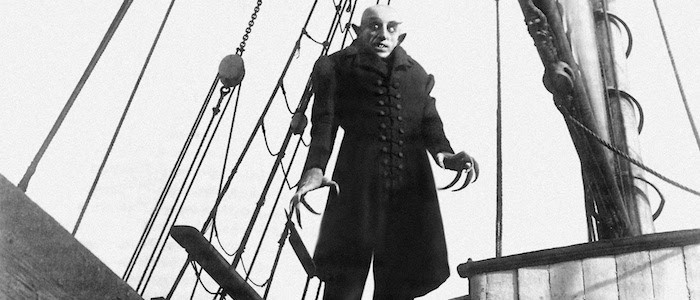Shudder: 10 Great Double Features You Can Watch On The "Netflix For Horror"
Between Netflix and Hulu and Amazon, you may think you have enough streaming options in your life. But you don't, especially if you're a horror fan. If you're in the market for a scary movie, you aren't going to find much to get excited about amongst most of the major players. The handful of gems tend to be wedged between whatever schlock your streaming service of choice could buy on the cheap.
That's why I was so intrigued by Shudder, a horror-centric streaming service that supplies all of the great horror options that are so painfully absent elsewhere. Browse through Shudder's library and you'll find untouchable classics and cult favorites, mainstream movies and eclectic curiosities from every corner of the globe. And it only costs five bucks a month, which makes me feel like I'm getting away with murder by subscribing.
Because I genuinely love Shudder and because you can sign up for a free trial before you commit to actually paying a dime, I combed through their archives and tried to find ten movies I could recommend to subscribers and curious newbies alike. I ended up narrowing it down to twenty titles and couldn't bear to cut another one because I have zero discipline. So I decided to program ten double features, linked by filmmakers, themes, styles, and occasionally utter nonsense, that you can enjoy via Shudder.
So don't let the lack of great horror options on Netflix bring you down. There is another way.
Sympathy For the Devil: Maniac (1980) and Sleep Tight (2011)
William Lustig's Maniac is a trash masterpiece, a grim and hopeless experience that flings you into a grimy hole of despair without a flashlight or a rope or a single kind word. And it's pretty great. The low budget and rough edges only enhance the impact of the final film, as there's nothing slick or beautiful to remind you that this is only a movie. In the end, you're left with Joe Spinell's terrifying and unforgettable lead performance, anchoring a movie that plants you squarely on the side of a true psychopath.
Like Maniac, Sleep Tight asks you to walk a mile in the shoes of a dangerous and irredeemable mad man. The result is a film that toys with your emotions and tears your sympathies into ribbons. Luis Tosar's César is an unforgettable horror villain, an apartment concierge who has made it his mission to make everyone around him as unhappy as possible. Naturally, this often involves completely destroying the lives of innocent people. And while we should be rooting for this terrible man to be found out, to be caught, director Jaume Balagueró (of Rec and Rec 2) pulls a Hitchcock. As with Norman Bates before him, you find yourself accidentally rooting for César to get out of each tense predicament, to get away with unspeakable crimes. This is feel-bad horror at its finest.
Just Don't Leave Your House: Rabies (2011) and Willow Creek (2013)
When directors Aharon Keshales and Navot Papushado made Rabies, Israeli horror movies simply weren't a thing. Now, they are their nation's foremost genre filmmakers, having achieved next-level status with their jaw-dropping sophomore feature, Big Bad Wolves. But you should definitely venture back and check out their debut, a slasher movie where the slasher spends most of the movie unconscious. Even without his help, the woods where he's hunting his latest victim explodes into violence as various characters cross paths and countless misunderstandings lead to shocking violence. The movie is vicious and hilarious in equal measure, a reminder that human beings will always find ways to kill one another, even when the "villain" is out for the count.
The only thing more surprising than comedian Bobcat Goldthwait turning out to be an insightful and angry filmmaker behind darkly comic gems like World's Greatest Dad is that he's also a fine horror director. Willow Creek is a found footage Bigfoot movie, following a couple whose relationship begins to crumble when they find themselves stranded in the wilderness while hunting for the Missing Link. Like most found footage movies, this is a slow burn, taking a long time to get where it's going, but when it does get there, Goldthwait delivers the goods. The build-up to the scares is surprisingly entertaining, as Goldthwait utilizes his charming leads to maximum effect and populates the supporting cast with real-world Bigfoot aficionados, playing themselves. One scene, an uninterrupted 20-minute static take that finds the two leads taking cover inside their tent while something rummages around outside, has to be seen to be believed.
Impressive, on a Budget: The Corridor (2010) and Citadel (2012)
The Corridor is an effective chiller that feels like an adaptation of a long lost Stephen King story. Except that, unlike most Stephen King movies, this one is actually good. The plot is straightforward enough: a group of friends go to a cabin in the woods for a weekend excursion, encounter a "corridor" of supernatural light in the woods, and then start to tear each other to pieces as this unknown energy transforms them into maniacs. Like John Carpenter's The Thing, every single frame of The Corridor looks just plain cold, transporting you to the icy north and sending unwilling chills down your spine. Also like The Thing, the violence is brutal, clever, and lingers in the back of your brain. Even when The Corridor pushes against the restraints of its budget, it's an impressive and memorable film.
Ciarán Foy's Citadel is one of the more ambitious horror debuts of the past few years. Nasty and relentless, it's an ode to single fathers, a strangely moving tale of confronting your greatest fears, and a borderline post-apocalyptic nightmare that treats a crumbling suburban neighborhood as a desolate wasteland. Aneurin Barnard is appropriately unhinged as Tommy, an agoraphobic widower whose attempts to raise his infant daughter are at odds with the local gang of murderous feral children that have taken over the neighborhood. Citadel isn't as slick as other films mentioned here, but it's raw and weird and concludes with abrupt-but-perfect climax that recalls the best Hammer horror films.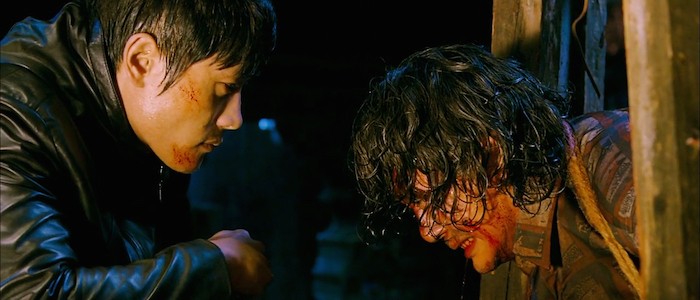
Highly Organized Evil: Exam (2009) and I Saw the Devil (2010)
Exam is probably the least "horror" film on this list of horror films, but it's an intense and exhausting experience that dabbles in several genres to create an imperfect but fascinating melting pot of ideas. The sci-fi-tinged setup is reminiscent of Cube: eight strangers from various backgrounds share one room, aware that they're being tested for a life-changing job at a mysterious corporation but unaware of what the actual test is. Tensions run high and soon everyone turns on one another. As more is revealed about the world outside the room, the characters' desire for this kind of opportunity becomes more clear and their actions more desperate. Exam fails to stick its landing (the final 15 minutes are borderline disastrous), but everything leading up to that is a chilling and intriguing dissection of the complicated feelings that come with competing for any job.
What happens when you take a cat-and-mouse story and replace the mouse with another cat? You get something like Kim Jee-woon's I Saw the Devil, a macabre masterpiece and genuine horror epic. I don't use that word lightly – at 141 minutes, this tale of serial killers and revenge and torture and manipulation is an hour longer than most of its genre brethren and it's more than a little exhausting. By the time the credits roll, you feel like you've just sat through six movies' worth of story. I Saw the Devil's first act is almost an entire movie: a trained spy goes on the hunt for the brutal serial killer who murdered his fiancee... and finds him in record time. But rather than kill him, he lets him go... and starts following him wherever he goes, making his life a living hell. There is real thematic heft here, as the film explores how violence begets violence and how sweet revenge tastes like ash in the mouth. And yet this is a fun movie, full of wicked dark comedy and twisted plotting that takes the viewer on a grand tour of South Korea's underbelly, which is apparently a fantastical place populated by professional murderers, cannibals, and talented sociopaths.
Nonfiction Nightmares: Cropsey (2009) and Lost Soul (2014)
Not many documentaries also function as effective horror movies, but Cropsey is an exception. Directors Joshua Zeman and Barbara Brancaccio delve into two tales that find thematic links: the urban legend of "Cropsey," a New York City boogeyman of murky origins, and the case of Andre Rand, who was convicted of kidnapping and killing five children in Staten Island. The film explores fact and fiction, myth and reality, asking how our legends inform our daily lives and create the fears we face on a daily basis. Cropsey is one part court room procedural and one part urban horror film. It excels as both.
After the grim Cropsey, Lost Soul: The Doomed Journey of Richard Stanley's Island of Dr. Moreau should bring the mood in the room up just a tad. As the lengthy title implies, this documentary tells the story of filmmaker Richard Stanley, whose ambitious attempt to adapt H.G. Well's The Island of Dr. Moreau into a feature film led to total disaster. After biting off more than he could chew, Stanley was fired off the project... and then things got really weird. Come for the hilarious and fascinating inside look at how one of the strangest cinematic disasters of the '90s came into being, but stay for the jaw-dropping stories about cast member Marlon Brando – they'll blow your brain our the back of your skull with their WTF-ery.
In the Middle of Nowhere: Tourist Trap (1979) and Jug Face (2013)
Every horror fan will eventually cross paths with Tourist Trap, an under-appreciated gem that has an oddball mood that is all its own. The setup is simple: a group of young people find themselves stranded in the middle of nowhere when their car breaks down. However, this particular middle of nowhere is home to a gas station with an attached "tourist trap," a small museum showcasing wax figures and crudely animated mannequins. As you could guess, the subjects of the museum have a bizarre origin and soon the cast is being picked off one by one. But Tourist Trap is no simple slasher movie. It's a mysterious and downright eccentric film that zigs when it should zag, revealing strange supernatural overtones that leave you questioning what the hell you just watched. Over 30 years later, this is still one of the freshest, strangest horror movies ever made, a film of unsettling quirkiness that feels like a direct response to tired '80s slashers that weren't even made yet.
Jug Face bites off more than it can chew. There are moments where this micro-budgeted film pushes against its budget in ways that remove you from the story, that make you question why certain creative decisions were made. And I lead with this because these elements are the only things keeping me from completely raving about Chad Crawford Kinkle's first (and so far, only) feature. Playing like a Deep South, backwoods cousin to the work of H.P. Lovecraft, Jug Face takes place in an isolated community in thrall to a mysterious supernatural pit, which promises prosperity — as long as the locals sacrifice someone every now and then. Kinkle's clever screenplay builds a fascinating mythology from scratch and never slows down to dump exposition on us. Instead, the film demands that we keep up, and putting everything together is half of the fun. The film plays like an adaptation of a legend you've never heard, like a great campfire story. It's the kind of debut that leaves you very excited for what the director does next.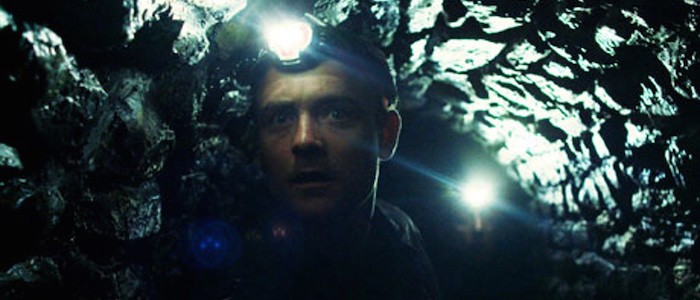
The Slowest Burn: Kill List (2011) and Penumbra (2011)
I previously wrote about Ben Wheatley's Kill List when I declared it one of my top 15 films of all time and I stand by that. This genre-shifting tale of two contract killers who bite off way more than they can chew when they take the wrong job is one of the most nerve-wracking and downright terrifying movies of the millennium thus far. Showcasing shades of the original The Wicker Man, Edgar Allen Poe, and a fistful of hallucinogens, Kill List is best experienced knowing as little as possible and best consumed in a single sitting in a darkened room. It takes its sweet time to get going, but that's intentional – you don't notice its hands around your throat until it's too late.
Speaking of films that take their sweet time only to climax with a bang, here's Penumbra, a movie that appears to be entirely about an excruciatingly dull apartment rental... until it's not. Directors Adrián García Bogliano and Ramiro García Bogliano have done something equally brave and foolish. They have crafted a slow burn that is so slow that you can only truly appreciate it after the credits have rolled. In the moment, it's a frustrating watch. For much of its running time, the story is little more than a realtor showing off an apartment to an eccentric renter. Things do get weird, but they get weird at an intentionally glacial pace. The results are actually startling – like the lead character, you don't realize things are wrong until there's no time for escape. There's a strong chance you will hate Penumbra, but I find it fascinating and cannot help but recommend it. It really is one of a kind.
Great Debuts by Directors Named Jeremy: Murder Party (2007) and The Battery (2012)
Before Jeremy Saulnier solidified himself as one of the most exciting American filmmakers working today with Blue Ruin and Green Room, he made this gnarly, no-budget dark comedy about a loner who stumbles across an invitation to a "Murder Party" and makes the unfortunate decision to attend. Although crude by the standards of his later movies, Murder Party showcase Saulnier's unique voice. It's how he blends shocking violence with dry wit. It's how he finds humanity in hero and villain alike. It's how he takes a typical movie scene (a chase, a fight, a murder), takes a step back and asks "But how would this actually happen in reality?" The answer to that question is "with a lot more hilarious desperation and unnerving slapstick." Saulnier's films may have grown more refined, but his love of throughly incompetent heroes and villains began here.
There are too many zombie movies, which means that every new entry in this genre needs to find a way to justify its existence. Jeremy Gardner's The Battery sidesteps this altogether by not being a zombie movie at all – it's really just a drama that just so happens to be set in the zombie apocalypse. Gardner and Adam Cronheim star as two baseball players who were far from home when the world ended. With their families and friends gone, these two teammates, who weren't friends to begin with, have now become companions, trekking through the desolate remains of civilization and surviving day-by-day. There is very little violence in The Battery and surprisingly little zombie action. Most of the running time is dedicated to these two men hating each other, loving each other, bickering, drinking, fighting, getting along, road tripping, and reminiscing. This is not a zombie movie, but rather a movie about a relationship that blossoms and falls apart and blossoms again under harsh circumstance. Gardner's work is observational, subtle, and surprisingly lovely. Like the two men at the center of his movie, he finds common ground between genres and ideas that normally wouldn't gel together at all.
Silent, Perfect: Nosferatu (1922) and The Phantom of the Opera (1925)
You could go watch F.W. Murnau's silent masterpiece Nosferatu on YouTube right now. It's in the public domain and you can pick from one of dozens of uploads. However, this is a film best appreciated on the largest screen you can find. It demands to be watched alone, in the dark. Although not scary by modern standards, this unofficial adaptation of Dracula (names were changed when the rights to Bram Stoker's novel couldn't be acquired) remains undeniably creepy. Nosferatu speaks an antiquated cinematic language, which only makes it more unsettling. It operates like few other horror movies by its very nature, feeling more like a bad dream than a narrative. Long after most movies have vanished from your brain, it lurks in your subconscious, the cinematic equivalent of a lingering bad feeling, a cosmic reminder that there are things that go bump in the night. Nosferatu is a masterpiece.
The Phantom of the Opera is the Universal Monster movie everyone forgets about. Because it's a silent film and because Frankenstein would redefine the horror genre forever six years later, this tale of a masked maniac who falls for a young opera singer and terrorizes the rest of her company often doesn't sit on the same pedestal as the more iconic classic monster movies. And that's a shame, because silent of not, everything about this film aligns with later masterpieces like The Wolf Man and The Mummy. There's the eerie, gothic cinematography. There are the deliberately artificial sets, which evoke strong feelings of unease. Most importantly, there's Lon Chaney's titular character, a heartbroken, wounded monster driven to violence for reasons that are painfully relatable.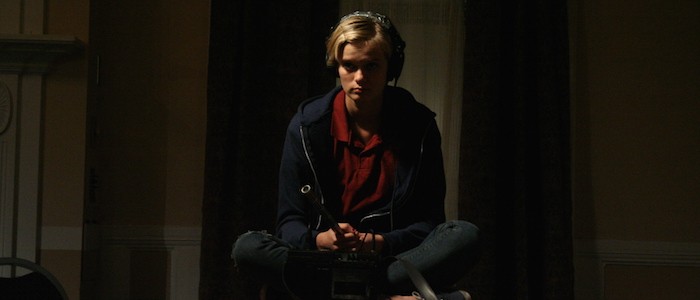
The Ti West-athon: The House of the Devil (2009) and The Innkeepers (2011)
Not much happens in the the first hour of The House of the Devil. A broke college student takes a babysitting gig offered by an eccentric couple in an isolated house. She wanders aimlessly from room to room. She orders food. She finds ways to pass the time. And then, out of nowhere, everything that could possibly go wrong goes wrong and her night turns into a living hell. But what's remarkable is just how intense and terrifying all of that "nothing" truly is. Writer/director Ti West teases just enough violence, offers just enough peeks behind the facade of this seemingly innocent situation, to let us know that something truly horrible is coming. And he makes us wait for it. That wait is excruciating and tense – we know what's coming and we want it to arrive. We need it to arrive. Our nerves can't take it. And yet he keeps on toying with us, stringing us along. When he does unleash the third act upon us, the wait is worth it.
Like The House of the Devil, The Innkeepers dabbles in nothingness before getting around to business. But unlike that film, the calm before the storm isn't an exercise in slowly rising tension, but a laugh-out-loud workplace comedy. Sara Paxton and Pat Healey play the underpaid, impossibly bored employees of an old hotel that's set to close in a few days. With the manager out of town, they slack off, engage in lengthy conversations, put up with their few customers, and, oh yeah, they try to finally track down the ghost that supposedly haunts the place. Spoiler alert: they do find that ghost and this slacker comedy instantly transforms into a supernatural tour de force that thrusts its painfully under-equipped heroes into life-or-death situations. The Innkeepers spends its first half making you love these characters through wry comedy and then forces you to watch them fall apart over the terrifying second half. It's riveting work.

